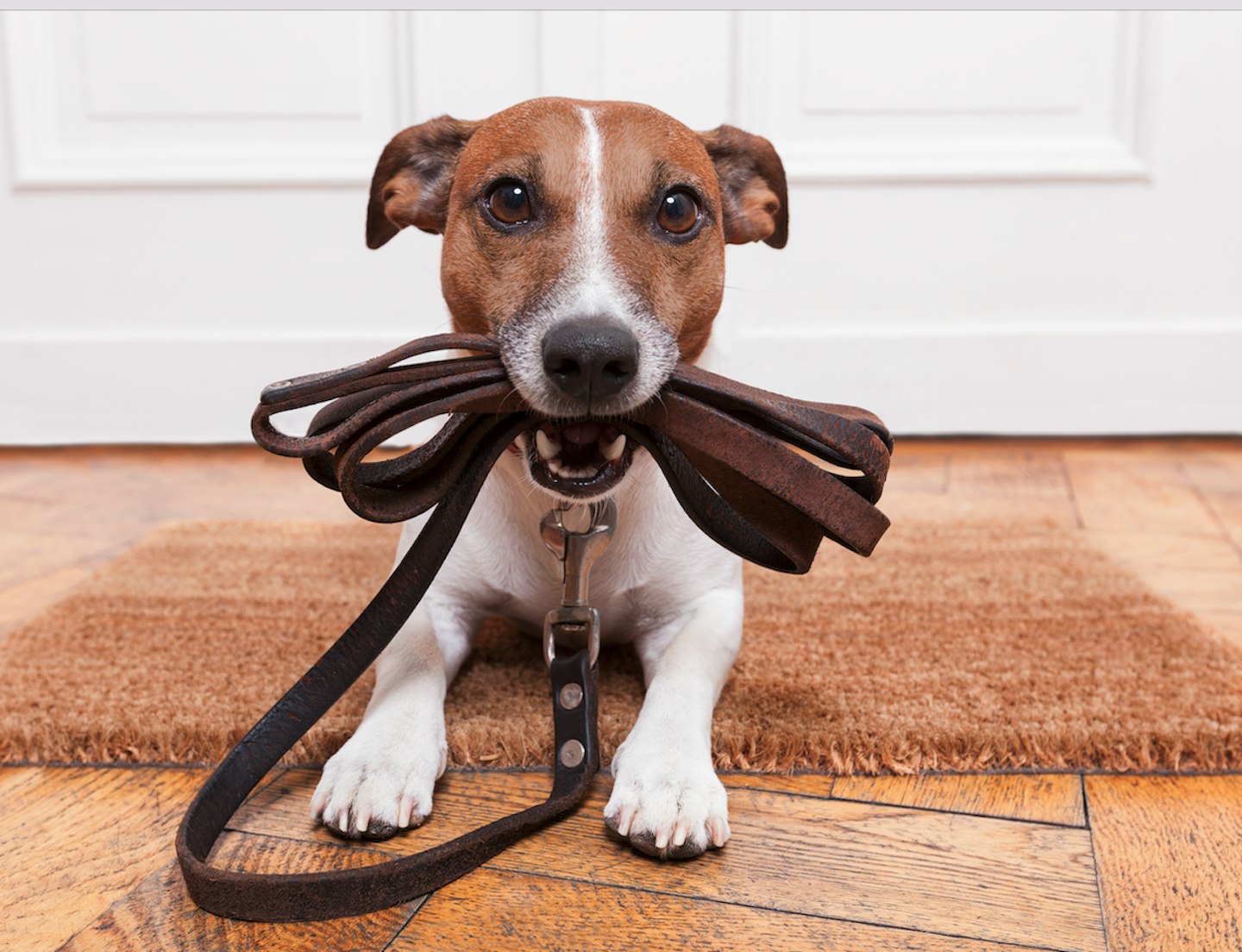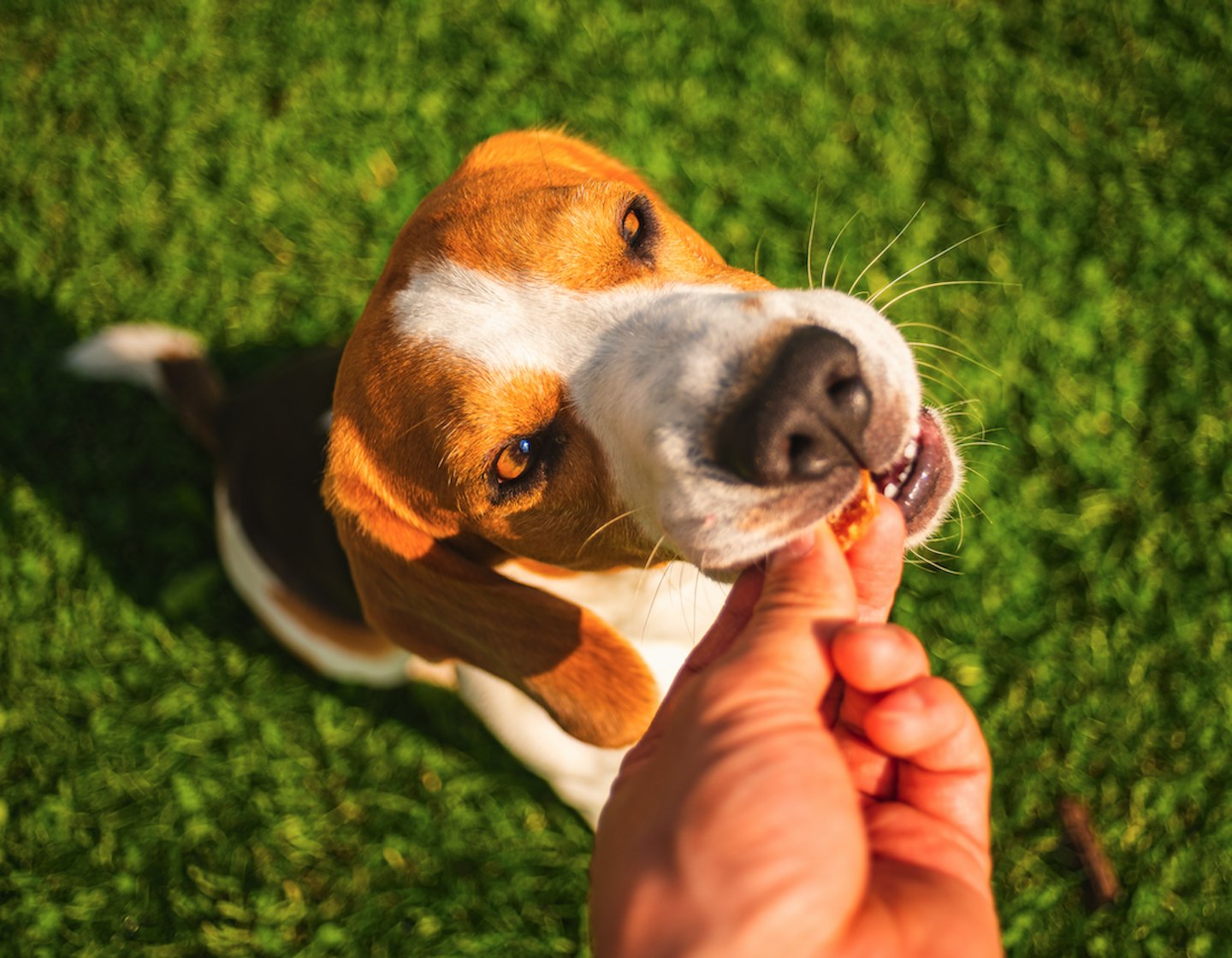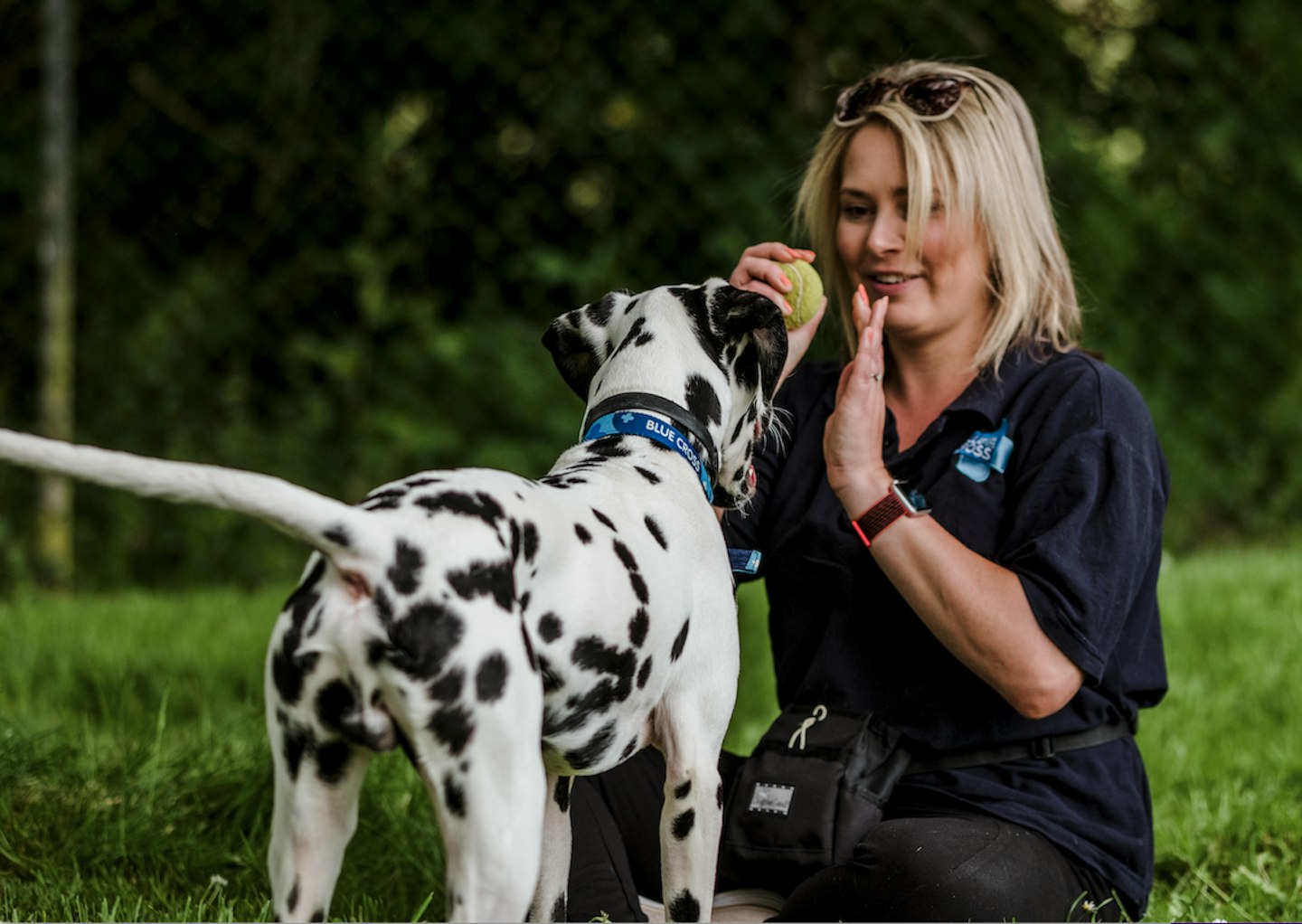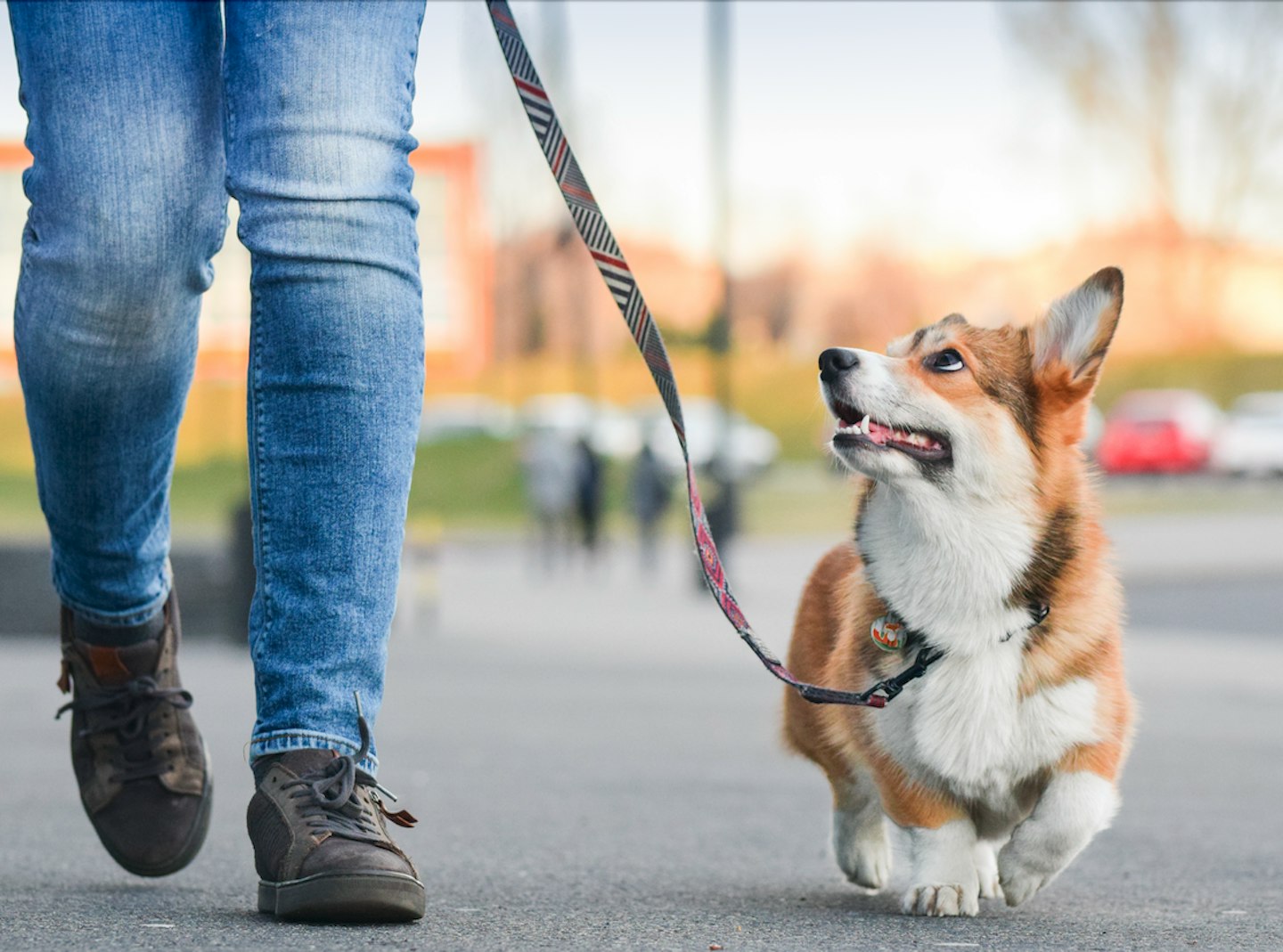Going for walkies should be a wonderful chance to spend time with your pooch, but for you to both enjoy the experience it’s important to train your dog how to walk nicely and safely on their dog lead – without them pulling.
For your pup, walkies with you may well be the very best part of their day, so it’s understandable that they might pull on their lead to try and get where they want to go faster.
And, if you give into this behaviour even a few times, it reinforces to your dog that pulling the lead gets them the result they want.
In this article, with the help of our expert Hannah Miell, Animal Behaviourist at Blue Cross, we explore why your dog may be pulling on the lead and give a step-by-step guide on how to train them to walk calmly…
Equipment you’ll need for training your dog to walk on their lead
It’s essential to have safe and comfortable equipment when teaching your dog to walk on a lead, this will include a lead which attaches to either a collar or harness.
Dog training lead
For teaching your dog to walk with a loose lead, it’s best to use a dog training lead that is three to four foot in length. It should be long enough for your four-legged friend to explore a little during walkies, while staying within the limits of the lead length. It is much more likely your dog will pull if you’re using a shorter lead.
The lead must be in good condition and a suitable size for your pooch (for example, thick and heavy leads are too weighty for small breeds whereas thin leads may break if used on a large breed).
Bungee, extendable or retractable leads are not appropriate for this type of training, as they give you less control, meaning your dog can put themselves at risk by getting too close to danger (such as traffic or other animals). They can also cause injury to a dog’s neck if they reach the end of the lead – and there is also a threat of pups (and people!) getting tangled up.

Dog collar
It might be easier to train your dog using a dog collar, rather than a harness, as they will be used to wearing one. Plus, they are more convenient.
However, they are not right for every pooch when it comes to lead training. Collars can put more pressure on a dog’s neck if they do pull during training, which can cause injury (especially in small and toy breeds). They’re also not appropriate for dogs whose heads are as thick as their necks (such as Whippets and Greyhounds) as they can easily slip out of their collar.
Collars that tighten as your pooch pulls are not recommended as these can cause suffering.
To ensure your dog’s collar is the right size, you should be able to comfortably slide two fingers underneath it. When it comes to puppies, you’ll need to check their collar every other day as they grow so quickly!
Slip collars or pinch collars should not be used as they can hurt your dog.
Dog harness
Dog harnesses generally give you more control over your pup as they disperse pressure over a dog’s chest, shoulders, and upper back – rather than just their neck (as with a collar). Because of this they are better at preventing accidents too.
They are also recommended for certain pups such as brachycephalic breeds (flatter faced dogs like Pugs and French Bulldogs) as they’re more prone to respiratory issues, and long-bodied breeds (such as Dachshunds) as they’re more prone to back and neck problems.
However, they are less convenient than a collar, and your dog might not like wearing it at first – which is why it’s important to introduce them to it in a positive way and make sure that when it is on, your dog’s range of movement isn’t encumbered and ensure it is a comfortable and secure fit.

Steps to training your dog to walk nicely on a lead
Below our expert Hannah shares her step-by-step guide to training your dog to walk on a lead.
Before you start
While learning can be a lot of fun for your dog, it’s important to ensure your training sessions are stress free. Keep each session short – we recommend up to five minutes at a time. You can repeat the sessions multiple times a day, but make sure your dog has plenty of breaktime in between.
Practice in an area where there are minimum distractions. Curious dogs may find the outdoors too exciting – instead, make a space at home with no toys out to distract them.
Make sure your dog has had everything they need e.g., a chance to burn off some energy, toileted. This will help them to focus and respond better to you.
Most importantly, pay attention to your dog's body language. If your dog is getting bored or frustrated, stop the training session and give them space. Signs that your dog is frustrated can include barking, whining, mouthing, pawing, or jumping up.
What you’ll need
To make learning as enjoyable as possible for your dog, you’ll need their favourite reward. This can be a tasty treat, like a small piece of sausage.
You’ll need a suitable length lead which you can attach to your dog’s collar or harness.
Make sure your dog’s walking equipment is well fitted and in good condition with no rips or tears to it.
If you and your dog are familiar with clicker training, you can use a clicker for this training as well.
Step 1
Ask your dog to sit calmly before attaching the lead. Reward any calm behaviour with a treat at this early stage as you want to avoid teaching your dog to become overly excited every time you set out for a walk.
If your dog becomes over excited, give them some time to calm down, return to them in a few moments and try again.
Step 2
Once you have managed to put the lead on, it’s time to begin walking.
Walk slowly and encourage your dog to walk on a loose lead by rewarding/clicking and rewarding them with food whenever they are next to your leg and their lead isn’t tight.
Imagine you have an invisible bubble around you, whenever your dog is in this bubble and the lead is loose, they can get a treat.
You can also reward them whenever they look up at you when the lead is slack, they are less likely to be able to pull on the lead if they are focused on you.
Step 3
If your dog pulls ahead, simply stop. Lure them back to your side with a treat and when they do this, feed and praise them again.
The idea behind this technique is very simple – if your dog walks on a loose lead they get well rewarded and get to continue their journey.
If they pull, the rewards stop, and their walk is paused.
Step 4
You can gradually build up the amount of time your dog can do this through lots of little sessions and then start to practice in different locations.
It’s important for you to be calm and remain patient when practising this skill with you dog so we don’t over excite our dogs or get frustrated.

Here Hannah Miell, Animal Behaviourist at Blue Cross, answers your frequently asked questions about lead training dogs.

FAQs
Why does my dog pull on the lead?
Going out for a walk can be a very exciting part of a dog’s day. Dogs have four legs and humans only have two, which means a dog’s natural pace is much quicker than ours and combined with being ‘tethered’ to us via a lead can result in the dog pulling forwards on their walks to try and get to their destination faster.
To make sure that our dogs and us are safe and comfortable when going on our daily walkies, we need to ensure they can walk calmly with us as a team.
You could also try buying a lead designed for dogs that pull.
How long does it take to train a dog to stop pulling on leash?
Most dogs will have already learnt that ‘the harder I pull, the quicker I get to the fun part’.
Please bear in mind that dogs that have learned this over a period of time will need lots of help and encouragement in order to change the habit of a lifetime.
It’s doubly important that we reward them generously for something that they find difficult.
Why does my dog bite the leash when walking?
Dogs bite their lead for a reason, so it’s up to us to work out why and to teach them an alternative as it can turn into a habit. These reasons might be that the dog is:
Anxious about something, such as a dog or person approaching them. They might target the lead because it’s the reason that they can’t get away from what’s making them anxious. They might also hold the lead in their mouth because it feels comforting to the dog.
Frustrated about being stopped from doing what they want to do, such as meeting a person, investigating a sniff, or playing with another dog. They might target the lead as it is stopping them getting to what they want and causes the feeling of pressure or tension.
Confused about what to do next.
Bored and tugging on their lead could be a way of starting a game with their owner or getting attention.
What age should I train my dog on a lead?
As soon as possible, all dogs can learn this skill.
It is important to get your dog used to wearing their walking equipment such as a collar and harness, before attaching a lead to them.
Should my dog walk beside me, or in front?
Having your dog walk by your side is preferable to ensure ours and their safety, especially when walking near traffic.
This also removes the temptation for them to pull ahead.
Is it illegal to have dog off lead in the UK?
There is no blanket law requiring dogs to be kept on a lead in all public spaces.
However, there are a series of orders that mean you must leash your dog in certain places in your local area, for example children’s play areas, sports pitches, roads, parks and beaches.
The Highway Code also says that dogs should be kept on a short lead along roads and on paths shared with horse riders or cyclists (rule 56).
Many local authorities have introduced Public Spaces Protection Orders over the last couple of years to restrict dogs to being walked on lead (or excluded from the area entirely) in certain public spaces. Look out for signage detailing restrictions. We also recommend checking your local council’s website for details of any restricted areas.
What can happen if I break this law?
Local authorities have the power to introduce these orders under a number of different laws and can issue fines or fixed penalty notices for those who don’t comply.
Law: Road Traffic Act 1988, section 27; Anti-social Behaviour, Crime and Policing Act 2014

This article contains expert advice from Hannah Miell. Hannah has spent over eight years working for pet charity Blue Cross. She is one of the Animal Behaviourists in their Behaviour Services team. The charity’s dedicated Behaviour Service focuses on helping people and their pets, whether it is to help owners keep their pets in their current home, to help pets transition into a new home more smoothly or for new owners to build an even better relationship with their new companions. Hannah has a degree in Animal Behaviour and Welfare and is an accredited Animal Training Instructor. She lives with her two dogs Cora the Dalmatian, Ellie the Chihuahua and her tabby cat Lola.
Joe Brothwell is editor of Take a Break Pets and adores all creatures great and small. Despite being a doting cat dad to Winnie, she continues to be aloof!
